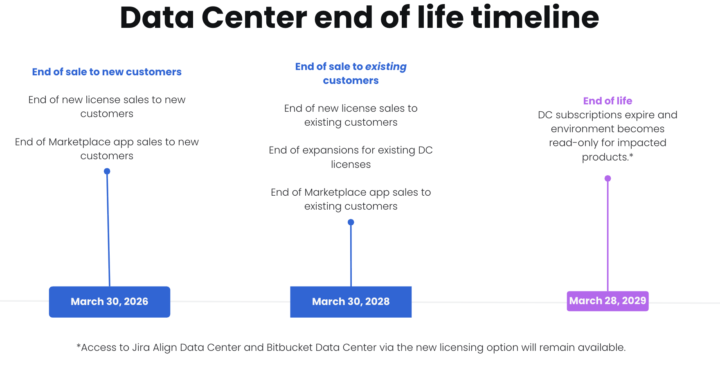Activity
Mon
Wed
Fri
Sun
Jan
Feb
Mar
Apr
May
Jun
Jul
Aug
Sep
Oct
Nov
Dec
What is this?
Less
More
Owned by Michael
Master Jira, JSM & Confluence with practical coaching to improve your project management and advance your career
Memberships
Atlassian Everything
67 members • $6/month
The Raw Course Launch Lab
388 members • Free
Aligned Entrepreneur Network
193 members • Free
Sell While You Sleep
685 members • Free
AI Ranking (FREE)
6.7k members • Free
Scrum Master Hackers
4k members • Free
Agile Community
942 members • Free
Skoolers
181.9k members • Free
31 contributions to ProjectFlow Academy
🔥 Big Changes Coming to ProjectFlow Academy
I'm completely refreshing the community with new 2026 content. Next 30 days: - ✅ This and next week: Assets Mastery 2026 - ✅ Week 2-3: Confluence Crash Course 2026 - ✅ Week 3-4: Multi-Project Visibility Mastery - ✅ Plus: Weekly live Q&A every Wednesday 2 PM All content = updated UI, real enterprise examples, Python automation scripts. Founding members: You're locked in at current rates forever. Even as prices go up for new members. First course drops Monday. Let's go. 🚀

🚨 Jira Data Center EOL Alert: March 28, 2029
Hey team! Atlassian just announced some big news - Jira and Confluence Data Center will reach end of life on March 28, 2029. The Quick Timeline: - Dec 2025 - No new DC apps in Marketplace - March 2026 - No DC sales for new customers - March 2028 - Existing customers can't expand DC - March 2029 - Game over for DC Why the change? Simple: 99% of Atlassian customers are already on Cloud or migrating there (including 75% of enterprise customers). The market has spoken - Cloud wins for speed, cost, and AI features. What this means for you: If you're on DC, you've got 3.5 years to migrate. Sounds like plenty of time, but trust me - complex migrations take longer than you think, especially with: - Custom configurations - Integrations - Large datasets - Training needs My advice? Don't wait until 2028. Start planning now while you have options and aren't competing with everyone else scrambling at the last minute. Currently helping several organizations with their DC → Cloud migrations. If you're facing this transition and want to chat strategy, drop me a DM. Happy to share what I'm seeing work (and what to avoid). Anyone else dealing with this announcement? What's your timeline looking like? P.S. - Bitbucket DC gets special treatment with a hybrid license option, so source code folks have more flexibility.

Jira Plans: The Ultimate Roadmapping Tool You're Not Using (Premium Guide)
Most teams struggle with project visibility across multiple initiatives. You've probably tried timelines, dashboards, and various reporting tricks, but here's the truth: if you need real roadmapping power in Jira, Plans is the game-changer you're missing. Plans is part of Jira Premium, and yes, it doubles your licensing cost compared to Standard. But after implementing it for enterprise clients, I can tell you when it's worth every penny - and when it's overkill for your needs. Why Plans Beats Timeline: Jira's timeline is decent, but it has major limitations. Timeline only supports issues linked to epics, doesn't support initiatives in team-managed projects, and can't import tasks from other projects. Plans solves all these problems while adding powerful reporting capabilities that turn it into more than just a roadmap tool. Getting Started: You can't mix Standard and Premium licenses - it's all or nothing for your entire organization. Atlassian usually offers 30-day trials, which is enough time to properly evaluate. Start simple with one project, not multiple sources. You can create a demo plan that automatically generates a sample project, or connect to existing projects using boards, custom filters, or direct project selection. The Real Power: Plans supports any Jira project type - Scrum, Kanban, JSM, and business projects. I've got JSM clients using Plans for service roadmaps, which works brilliantly. The key feature is support for issue types above epics (initiatives), creating proper hierarchy for large-scale planning. However, initiatives require company-managed projects - team-managed projects can add them but won't show proper hierarchy. Visual Planning Magic: Everything is drag-and-drop visual. Move an initiative and all belonging epics move with it. You can create issues directly in Plans, change dates, adjust status, and plan scenarios A, B, or C. Critical point: changes exist only in Plans until you save/commit them to Jira. This planning mode lets you experiment without affecting live data.
0
0
Jira Service Management Assets: The Complete Setup Guide (Honest Review)
After implementing JSM Assets for enterprise clients like BBC and Vodafone, I'm sharing the unfiltered truth about this CMDB tool - including why I have mixed feelings about it. JSM Assets lets you build a Configuration Management Database directly in Jira Service Management. Instead of agents typing "Dell Inspiron 15" into tickets, they select from your asset database. When someone reports a laptop issue, the ticket automatically links to that specific asset record, creating a complete audit trail. Getting Started: You need a Premium license - no way around this. The good news? I recently got a 60-day trial instead of the usual 30 days. Worth requesting to properly test the tool. The Brutal Truth About Limitations: Here's what Atlassian doesn't highlight. You cannot connect to AWS, Azure, or Microsoft Intune. If you need cloud infrastructure discovery, this won't work. The reporting is awful - slow, unreliable, and often returns no data even when assets exist. I've tested extensively and it's consistently disappointing. Also, you can't edit field names in the default templates. Want "Lease Details" instead of "Lease Contract"? You'll need to delete and recreate fields or start from scratch. Setup Process: Navigate to Assets from your JSM menu after activating Premium. You'll see three templates: IT Assets Management (comprehensive hardware/software setup), HR Assets (employee equipment), and Custom Schema (blank template). I recommend testing with IT Assets Management but using a blank schema for production to avoid field restrictions. The template gives you a solid hierarchy: Hardware → Computers → Laptops → Specific Models. Adding objects is simple - click the plus button, name your object, select an icon, and choose the parent category. You can configure unlimited custom attributes like purchase date, warranty expiration, cost center, and vendor details. Integration Magic: The real power comes from connecting assets to JSM request types. This needs two steps: create custom fields using AQL (Assets Query Language) to populate dropdowns from your asset database, then add these fields to your request forms.
0
0
Stop Losing Your Meeting Notes (Confluence Plugin Review)
If you're a product manager or team lead drowning in daily calls and recurring meetings, you know the pain. Meeting notes scattered everywhere, action items forgotten, and that constant feeling you're missing something important. I've been testing Meetical Calendar for Confluence, and honestly, it's a game-changer for anyone serious about keeping their meeting workflows organized. This isn't just another plugin - it's your meeting chaos solution. The Magic Happens in Three Ways: First, the "on-the-fly" mode. Got an existing Outlook meeting? One click adds it to Confluence with a pre-built template, automatically mentions all participants (so they get notified), and creates your meeting page instantly. No more scrambling to take notes during calls. Second, recurring meetings become effortless. Instead of manually creating pages every week for your one-on-ones or team updates, Meetical detects recurring events and lets you choose: one master page for the entire series, or automatically generated individual pages. I use this for my weekly developer reviews, and it saves me hours. But here's the killer feature that got my client's attention: automatic action item population. When you complete one meeting in a series, your action items automatically carry forward to the next meeting page. No more "What did we decide last week?" moments. As I show in the video, I add an action item on the 19th, and it's already waiting for me on the 26th meeting page. Setup takes literally minutes - connect your Google Calendar or Outlook 365, choose your templates, and you're done. The plugin supports both web-based and standalone Outlook versions, and comes with about 10-15 pre-built templates you can customize at the space or global level. Why This Matters: Your meeting notes aren't just documentation - they're your project memory. When everything lives in Confluence with proper structure and automatic linking, your team actually follows up on decisions instead of rehashing the same discussions weekly.
0
0
1-10 of 31
@michalek-kj
I'm Atlassian SEM, and I am helping Scrum Masters, PMOs, BAs, or Managers to Master Jira, Confluence, or Service Desk Fast https://projectflow.co.uk/
Active 1d ago
Joined Nov 25, 2022
London UK

